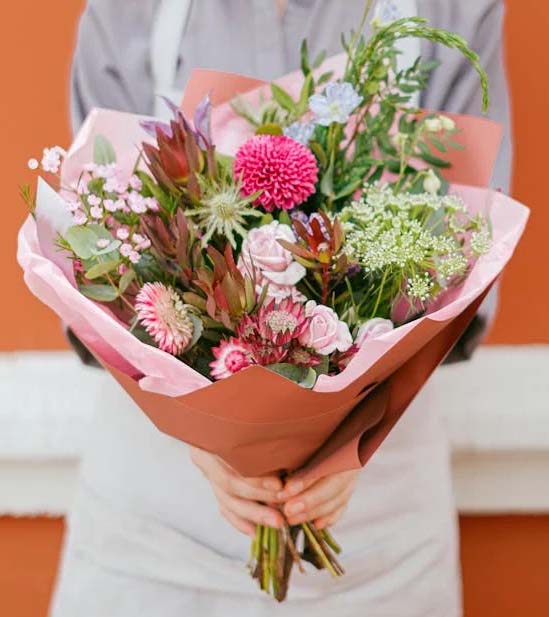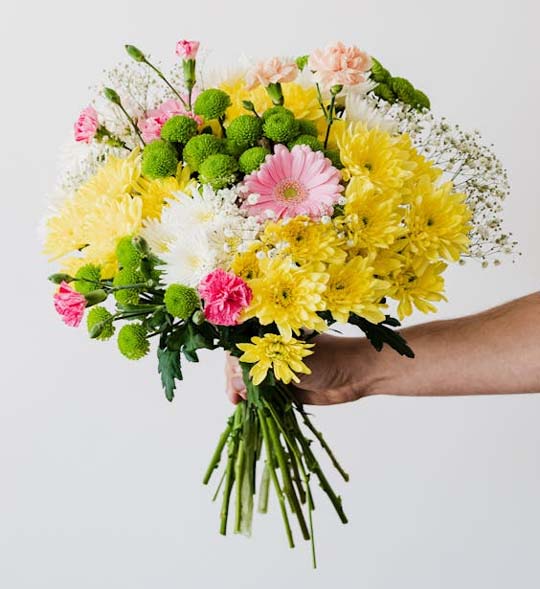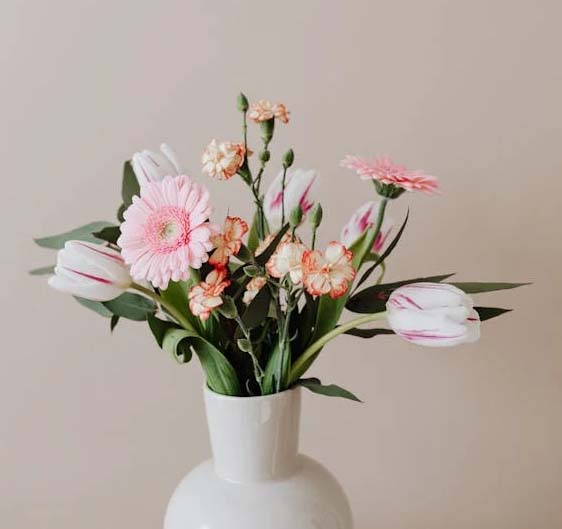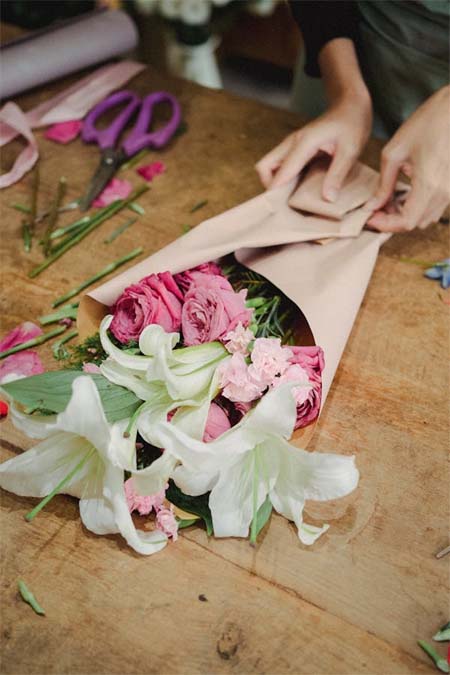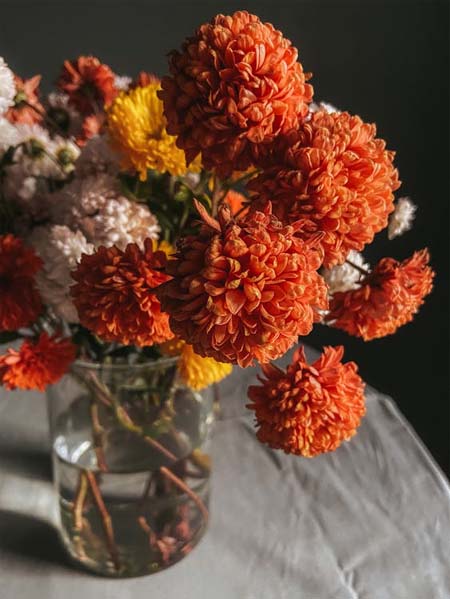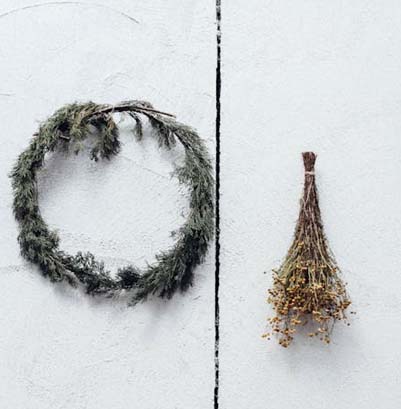PRESERVING CUT FLOWERS
(Keeping Cut Flowers Fresher Longer)
If you have ever wondered how some people have no problem keeping cut flowers fresher longer than you do, you may not be privy to the science behind preserving cut flowers! There really is science working here, specifically chemistry and biology.
Below are three actions you can take if you are interested in keeping your cut flowers fresher longer...
#1 CUT the STEMS
Snipping off the tips of flower stems before placing them into a vase or other receptacle is the first action to take when you have cut flowers. While doing this, it is important to vary the heights of the cut stems for 2 reasons:
- First, it will prevent flowers from bumping into one another and having their petals knocked off.
- Second, there will be less of an opportunity for dense wet clumps of foliage to promote microbial growth.
Here is the science behind why stems, leaves, and petals become wilted and floppy: There is a force in plant cells that pushes their plasma membranes up against their cell walls, allowing them to draw in water and remain rigid. The force is called turgor or hydrostatic pressure.
Turgor or hydrostatic pressure is aided by making fresh cuts to the stem tips. It allows a channel to be opened for water to enter. Further, if the stem tips are cut at an angle, this avoids air bubbles in the stems that can block the flow of water.
Watch out for plants such as poinsettias, heliotropes, or poppies, which are latex-emitting plants and can become plugged with sap, preventing water intake. To avoid this problem, you can heat their stem tips briefly. This can either be done with a flame or by dipping them in boiling water.
For all fresh cut flowers, be careful to minimize the possibility of microbial contamination by removing any lower leaves that fall below the waterline of the receptacle. These can rot and plug the stems as well as promote bacterial growth. Sterilizing your scissors or knife and receptacle before use can also be helpful.
#2 - USE PLANT FOOD
Fresh cut flowers from a florist or store will have a little sachet of plant food enclosed with the bouquet. The plant food has 3 purposes: acidifying the water, providing a source of carbohydrates, and preventing bacterial growth:
- Acidifying the water. The slight lowering of the pH of the water increases the amount of water that cut flowers can intake, helping to maintain turgor or hydrostatic pressure.
- Source of carbohydrates. They are the food source for the flowers and maintain their metabolic activities. Sugars help plants retain moisture and not dry out.
- Preventing bacterial growth. Most commercial plant foods may also contain other agents to limit the growth of microbes, such as silver or chlorine compounds.
Plant food can also be made relatively easily at home. Recipes can be found on the Internet but here is a basic home recipe specifically for cut flowers:
- 1 quart water
- 2 tablespoons lemon juice
- 1 tablespoon sugar
- 1/2 teaspoon bleach
#3 - MINIMIZE STRESS
Minimizing stress is as important for cut flowers and other plants as it is for humans. Keeping your cut flowers in the most peaceful conditions possible will help to make them last longer.
Here are ways to provide a peaceful environment for your cut flowers:
- Minimize direct sunlight and heat that can dry them out, cause the water to evaporate, and increase their metabolic rates. This is why florists store flowers in refrigerators.
- Never Store flowers next to fruit. Fruits such as bananas, tomatoes, and avocados especially give off ethylene gas. This gas is a plant hormone that can cause senescence or dying. Carnations daffodils, delphinium, and lilies are especially sensitive. There are external sources of ethylene such as car exhaust, cigarette smoke, and of course, other decaying plants. Removing any flowers that are starting to die can help preserve the remaining ones.
- Minimize physical movement of flowers. This can increase their rates of petal drop. Avoid strong breezes and keep them away from vibration sources such as tumble dryers.
OTHER WAYS OF
PRESERVING CUT FLOWERS
- Dry them! At the first signs of decay, just hang them upside down to dry. The preserved blossoms can be beautiful additions to any decor, and they will last a very long time.
- Choose flowers known for lasting longer. Carnations, tulips, chrysanthemums, and anthuriums have been known to last for 2 weeks or longer. (Dahlias, irises, and daffodils typically last less than 5 days. once cut.)
Preserving cut flowers by keeping cut flowers fresher longer can add to our pleasure and enjoyment. Once their life cycle is done, they can be dried and become beautifully preserved blossoms that can adorn our homes for a very long time (and do not require water or any special care).
Some information was used from an article at the McGill University Office for Science and Society by permission.
"The Cleanest Clean You've Ever Seen."
by
ABC Oriental Rug & Carpet Cleaning Co.
130 Cecil Malone Drive Ithaca, NY 14850
607-272-1566


